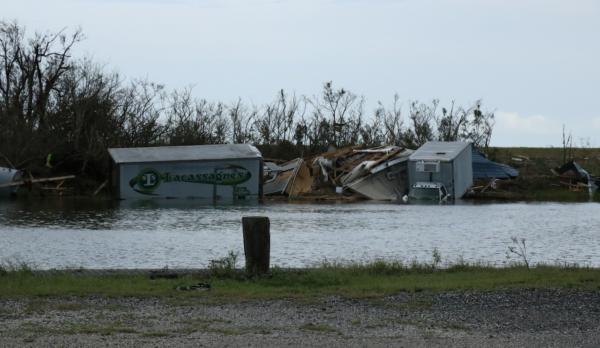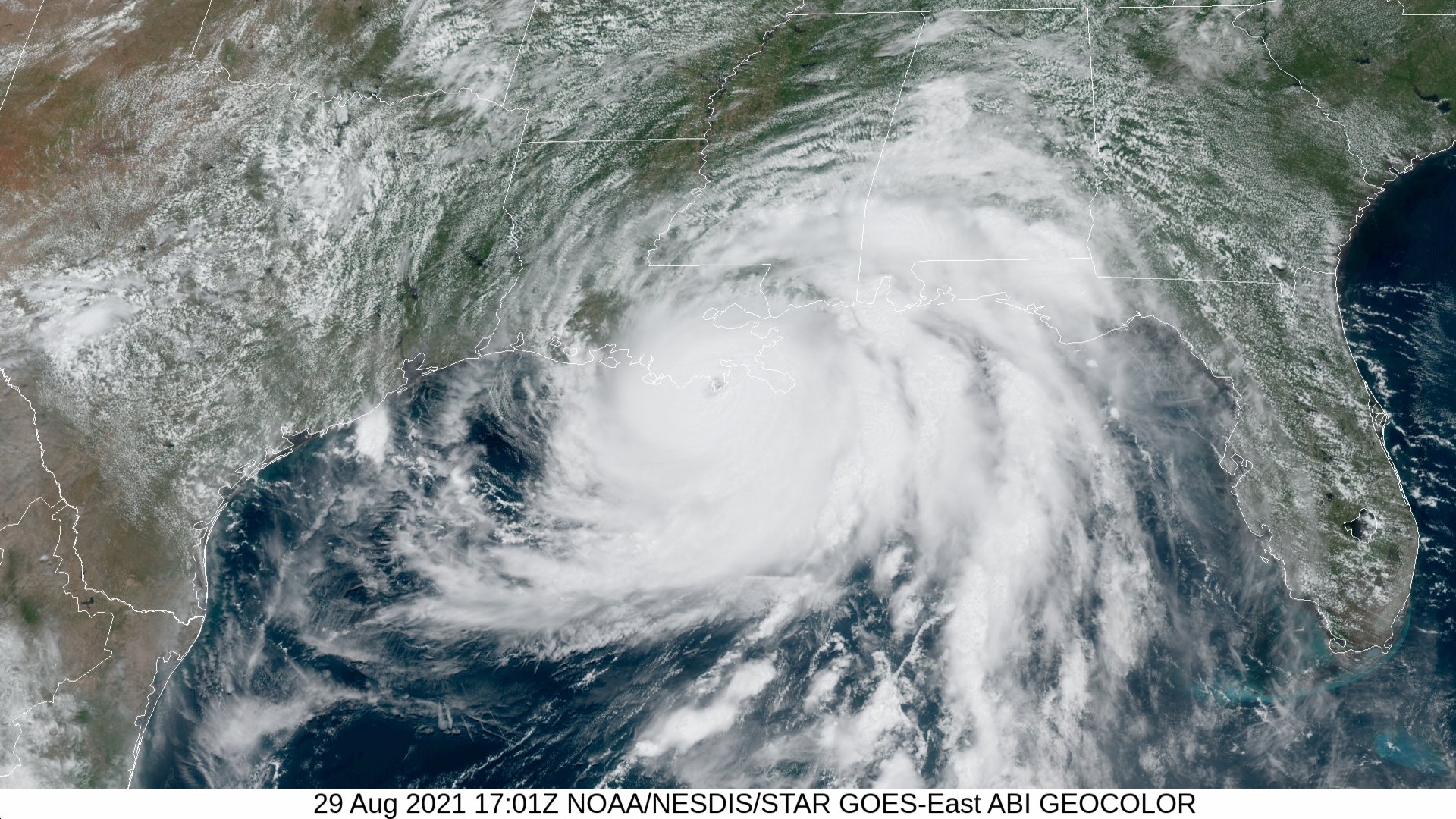After being away for four days, I’m finally returning home, uncertain about the condition of my house after Hurricane Ida ravaged my hometown. The aftermath is grim with downed power lines, roofs torn off houses, cars submerged in the bayou, and blue tarps covering damaged roofs. This devastation occurred in August 2022 when Category 4 and briefly Category 5 winds battered Houma, Louisiana.
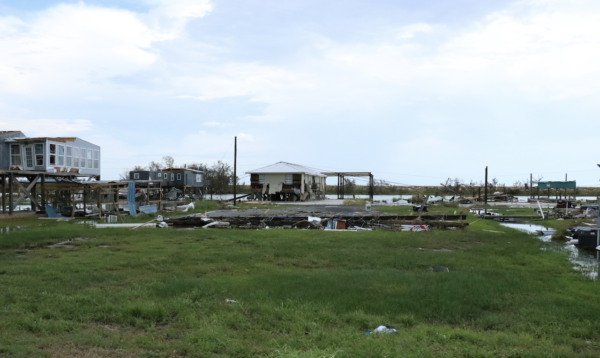
Those categories, the Saffir–Simpson hurricane scale, were introduced by the National Hurricane Center in the 1970s. Originally the scale was meant to convey both wind and water destruction but was simplified in 2010 to focus solely on wind hazards, while storm surge and precipitation risks are now communicated separately.
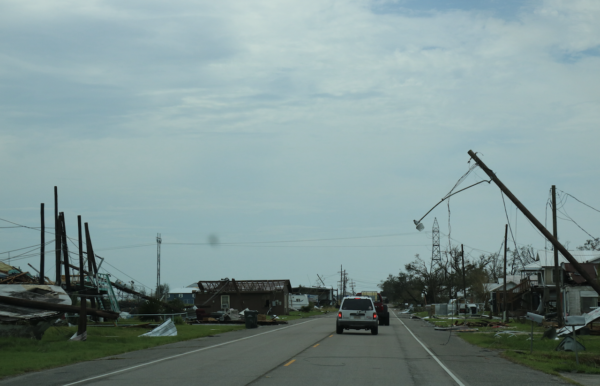
The scale is open-ended with Category 5 storms being the top with sustained winds greater than 157 miles per hour (70 m/s). This open-endedness originated from the belief that the cumulative impact of wind, surge, and rainfall in a Category 5 event could utterly destroy any structure. But Category 5 may no longer be enough.
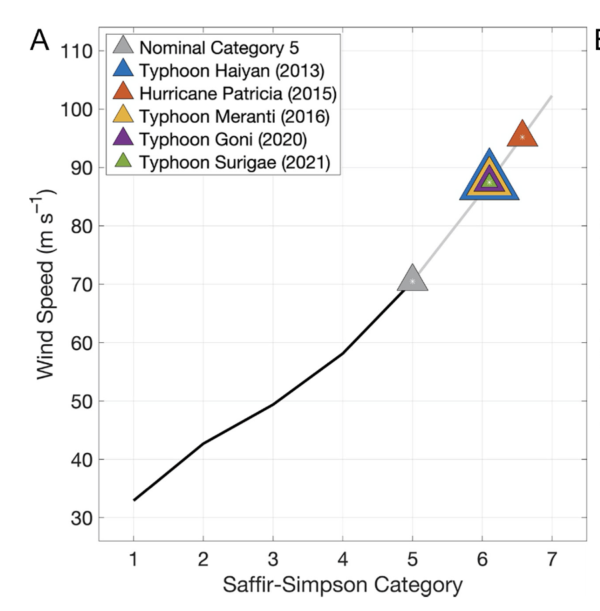
A new study suggest that we need a Category 6 that categorizes storms greater than 192 miles per hour (86 m/s). Numerous storms have already reached wind speeds comparable to those in in the Category 6 range. In the past nine years, five storms have surpassed the hypothetical Category 6 threshold. Notably, the most intense of these, Hurricane Patricia, struck Jalisco, Mexico while the others occurred in the Western Pacific, including Haiyan and Goni which hit heavily populated areas of the Philippines. Haiyan, considered by some as deserving of a Category 6 designation, caused extensive damage and casualties in the Philippines. Another storm, Meranti, caused damage in the Philippines and Taiwan before making landfall in eastern China, resulting in severe flooding.
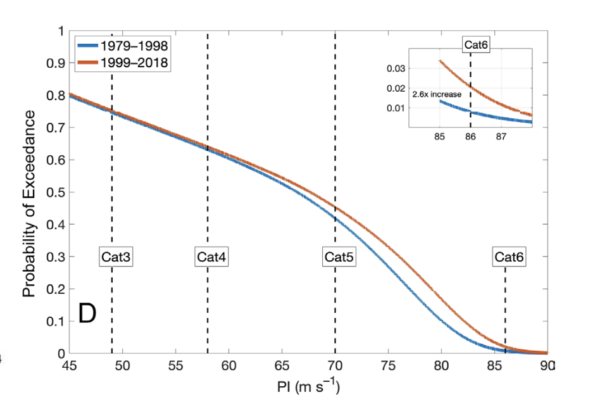
In addition, increases in Emanuel’s Potential Intensity (PI) index indicate that human influence on the climate system has elevated the risk of such storms reaching Category 6 levels. You can think of hurricane as engine that transport that energy, i.e. heat, from the ocean surface to an outflow at the boundary between the troposphere from the stratosphere. The PI measures the strength of this hurricane engine. Looking at data from 1979 to 2018, the authors found that the likelihood of storms reaching Category 6 strength has increased significantly due to global warming. Comparing the periods from 1999 to 2018 and 1979 to 1998, almost three times more instances of storms exceeding the Category 6 threshold occurred. The authors note, “Overall, the chances of PI exceeding the category 6 threshold have more than doubled since 1979.”
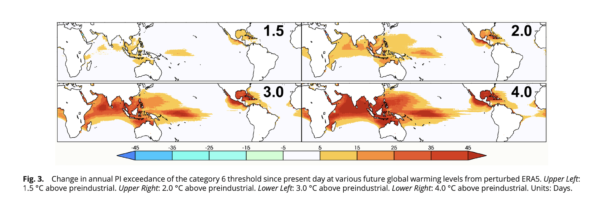
Additionally, climate model simulations conducted by the authors predict further increases of these Category 6 hurricanes. The authors demonstrate that when they run long-term simulations using three advanced global climate models, they all predict the greater occurrence of Category 6 storms in conditions hotter than what we have today. Even if we manage to meet the relatively modest global warming goals outlined in the Paris Agreement, these simulations still show a significant rise in the likelihood of Category 6 storms happening.
